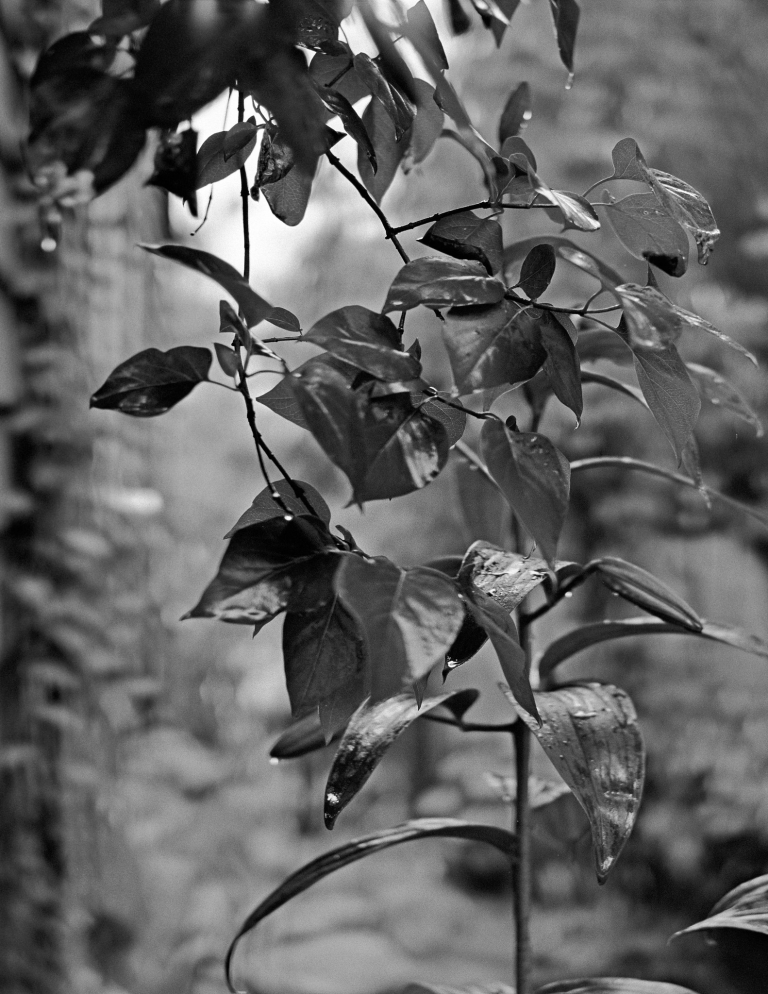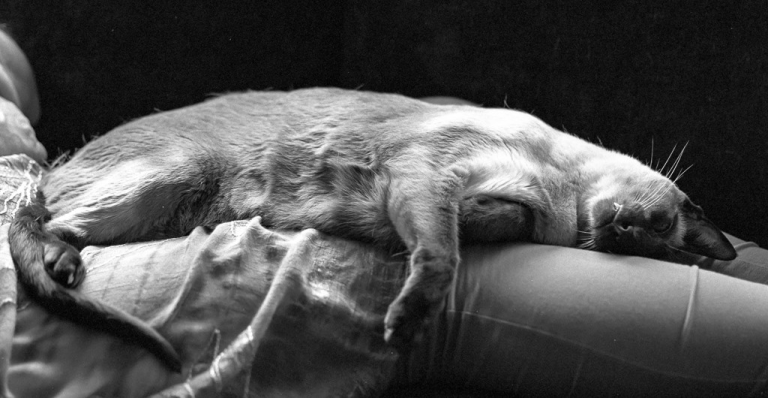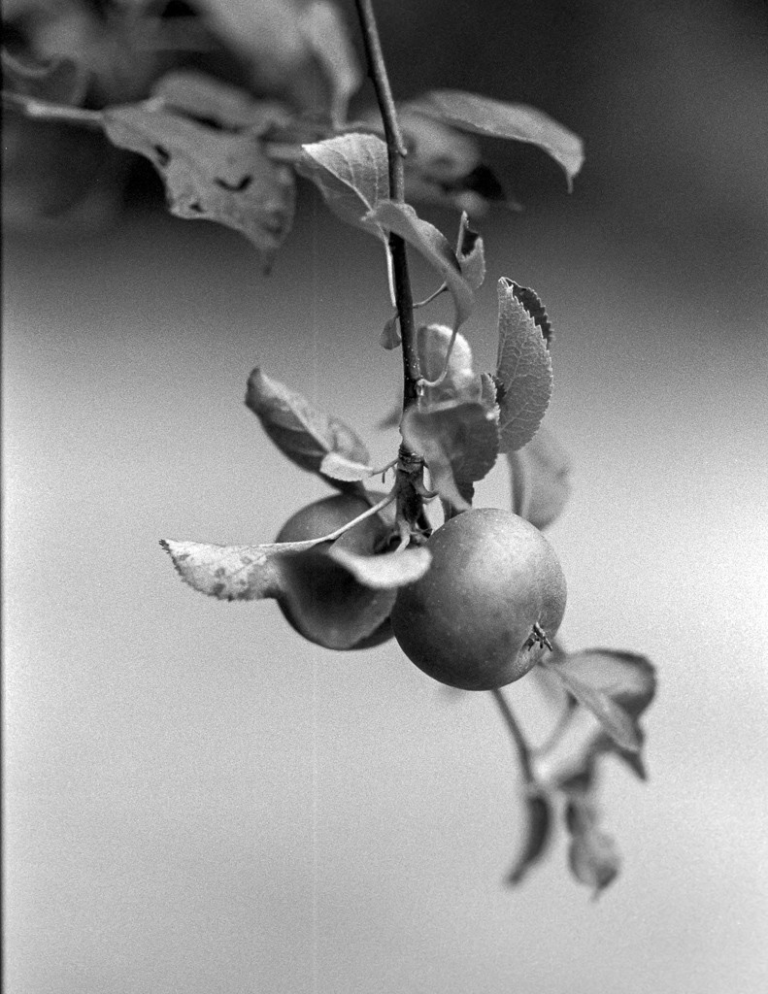Again I importune readers to keep those wildlife photos coming in. And many thanks to those who have contributed.
Today we have some black-and-white photos by reader Christopher Moss. His captions and IDs are indented, and you can enlarge the photos by clicking on them. This was sent on March 15:
Inspired by today’s B&W film, I thought I’d throw some more your way.
Rain on trumpet lilies (Lilium spp). Leica MP, Summilux 75mm, Delta 3200 in Diafine.
Nuttby Dream Home. Supposedly the second most photographed site in Nova Scotia (how does one ascertain that?), and now demolished. Leica M7, Summicron 50mm, Tri-X in TMax developer.
It’s nice having a brewery at the end of the driveway! Hasselblad 500c, Planar 80mm, XP2, Rodinal developer:
Their product. Pentax 645n, 80mm lens, Tri-X, Diafine:
Lap Cat. Pentax 645n, 120mm lens, Ilford HP5+, Diafine:
Russet apples. Nikon F6, 85mm lens, Tri-X, TMax developer:
Bridge over the Waugh River, now part of the Great Trail. Rolleiflex 2.8GX, XP2, Rodinal:
Fog at Barrachois. Leica MP, Summilux 35, XP2, Kodak HC-110:
I took this photo of a tranquil lake in 2016. Six years later we bought this house and now live there! Leica M2, Summilux 35, Acros 100, Kodak HC-110:
Icicles over the front door, Leica M2, Summilux 35, Ilford PanF, Kodak HC-110:
Wallace. Nikon F6, 28mm lens, XP2, Kodak HC-110:
And finally, the culprit:













Beautiful set – love that mood.
Great pix! Black and white can be so effective.
“…a brewery at the end of the driveway!” I have questions.
And are you actually still doing darkroom work? I did, years ago, but I honestly thought that the digital era made that obsolete.
Anyway, love the photos, however they were produced.
Yes, but only film development: I have abandoned my enlarger. Now I scan the negatives into large TIFF files and adjust them digitally. Scanners used include a Hasselblad X1, Nikon 5000 and Epson V850. Why bother? Well I enjoy the mechanical cameras, and while I have sold most, I keep these:
Olympus Pen FV for half frame
Olympus OM-1, OM-2 and Nikon F6 for full frame 35mm
Hasselblad 500c and 500cm for medium format
Chamonix 045N for 4×5
My last proper darkroom work was with 10×8 paper negatives when I had a Chamonix 10×8 camera.
Processing I have made simple with Agfa Rondinax tanks adapted ( https://flic.kr/p/2m4NvU5 ) with an electric motor to reduce the repetitive strain injuries. I like B&W most of all, but can do E6 slide film and C-41 color negative film. My favourite B&W film is Ilford XP2 Super, a chromogenic film designed to be developed in C-41 colour chemistry, but which can be developed perfectly well in B&W chemicals. Very little grain. See my article https://www.ilfordphoto.com/ilford-xp2-super-in-black-and-white-chemistry/ .I do have a couple of digital cameras, but they feel like I’m cheating!
The brewery is Tatabrew – the Tatamagouche Brewing Company. Excellent products! Unfortunately, I have now moved away to Amherst, NS (and sold both my house and office to the brewery owners, but I don’t get a discount!)
Wow, you are far more knowledgeable about cameras, film, and darkroom work than I ever was! I especially LOVE your agitating machine.
I’m afraid to say that once I had a taste of Photoshop, I dropped film and darkroom work like a hot potato! I can perfectly sympathize with poor Kate Middleton – the temptations of photo manipulation via software are powerful.
As for the brewery, you should have demanded more than a discount. You should have held out until they agreed to supply you with free beer for life. I bet they’d have buckled.
Anyway, thanks for your very interesting reply.
These are just gorgeous, thank you.
Love these photos. Wonderful impressions of Nova Scotia.
Wonderful stuff! Black and white is better than color. Just my preference.
Love the melting kitty, and beeyooootiful Nova Scotia!!
Awesome pics!
Very nice B&W images, thanks for sharing these Christopher.
I stopped using film cameras in 2004. But I do love my old negatives. 🙂
Christopher, you are getting very nice tonal range. Do you follow the Zone System or the Zone VI Studio methods?
No, it is too complicated for me! I generally don’t use the built in meter if a camera has one (exception: the Nikon F6 very nearly always gets it right), but use an incident meter to measure the light falling on the subject.
Yes, very old-school.
In my 35mm (and 6cm) days, I also did not use light meters. I trained myself to recognize the lighting conditions and used the exposure recommendations from Kodak on the film box.
With my current digital gear, the light meters are so good that I use them and the autofocus (my old eyes aren’t up for manual focus anymore). My current cameras have an electronic viewfinder. Which took some getting used to; but now I love it.
The EVF provides a complete preview of your shot, including exposure. I shoot in aperture-priority AE and use the exposure compensation dial to tweak the exposure. This works great. (And I was gratified to read that this is exactly what Steve Simon (The Passionate Photographer) does.
Here’s to some great photographic art. Thanks for sharing- you have quite the array of equipment.
Nice. And now you get to see that lake every day!